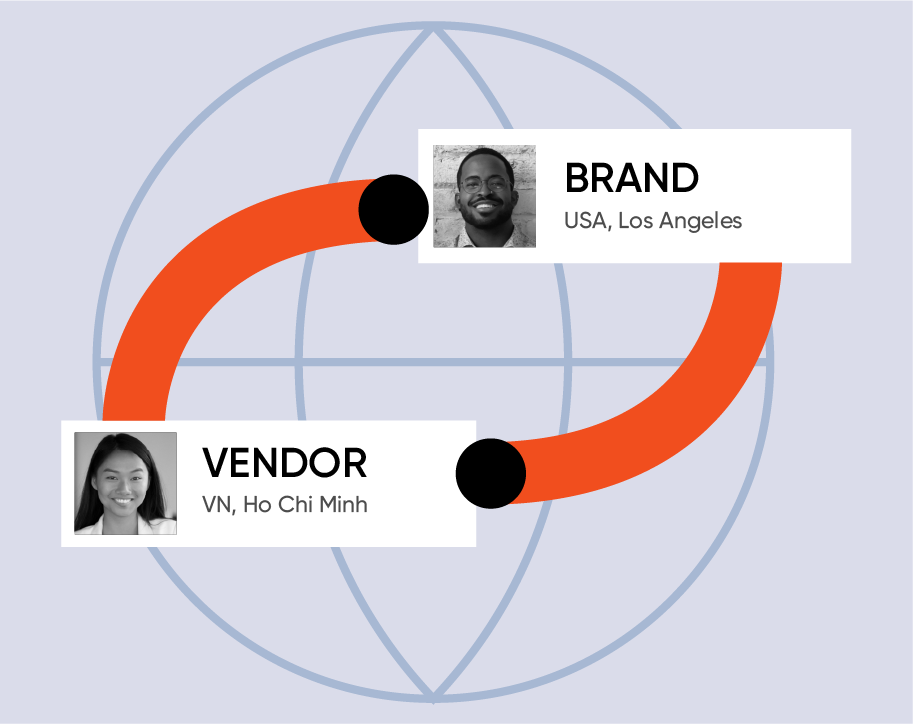What Is Fit in Clothing and Why Is It Important?
Discover how Browzwear’s digital tools redefine garment fit, boosting accuracy, cutting returns, and enhancing customer satisfaction in fashion.
June 5, 2025

Fashion brands and vendors are under increasing pressure to be faster, leaner, and smarter. Yet the traditional vendor-brand relationship, once the backbone of the global fashion supply chain, is struggling to keep up.
Legacy workflows, disconnected systems, and outdated production models hold many fashion companies back. The solution lies in rethinking how brands and vendors work together, powered by digital transformation, circular collaboration, and real-time virtual prototyping.
The old production model no longer works in today’s fashion industry. Legacy brands tied to slow, seasonal calendars and offshore production struggle to keep up with rapidly changing trends. Meanwhile, emerging brands thrive by compressing development timelines, restocking in weeks, and leaning on agile, vendor-driven models.
Fashion companies face complex challenges that demand a fresh approach. Brands must balance profitability with agility while managing volatile supply chains, shifting tariffs, and economic uncertainty.
Operational efficiency is more critical than ever. Teams are working to reduce errors, miscommunication, and costly last-minute changes. Maintaining product quality across global vendors adds more complexity, along with the need to respond quickly to changing consumer demand and avoid overproduction.
Brands are also being pushed to replace physical sampling with digital assets ready for AI-powered workflows. On the vendor side, there’s pressure to deliver faster, take on more design and development responsibilities, and stay competitive by minimizing hidden costs like sampling, shipping, and revisions.
Many fashion companies still invest in tech that focuses on visuals rather than the data-driven decision-making needed to truly transform the supply chain. This disconnect is a critical gap that both brands and vendors must close.
The industry doesn’t need more technology. It needs connected, intelligent systems that enable real-time vendor-brand collaboration.
To thrive, brands and vendors need a platform that:
Connects Complex Workflows: Moves beyond linear processes for seamless, circular collaboration.
Extends the Value of Digital Assets: Unlocks insights and intelligence within virtual garment data.
Speeds Up Time to Market: Enables rapid development without compromising brand quality.
Reduces Product Risk: Ensures consistency and accuracy across global vendor networks.
Minimizes Waste: Cuts down errors, rework, physical samples, and excess inventory.
True transformation happens when both brands and vendors invest in shared success. Browzwear’s Open Platform, powered by virtual twin technology, supports a circular approach to digital product development, where digital assets drive speed, accuracy, and profitability.
By adopting collaborative circular workflows, brands and vendors can not only reduce costs and minimize revisions but also improve communication and co-creation throughout the process. With shared access to accurate digital assets, both sides can align earlier, avoid costly mistakes, and ensure that designs are executed correctly the first time. These workflows foster real-time collaboration, helping teams stay in sync and launch products that meet demand faster and more efficiently. Digital assets can also be repurposed across collections, streamlining the entire fashion supply chain.

Faster Speed to Market: Reduce delays and streamline approvals through better communication and shared visibility.
Lower Costs: Minimize sampling, shipping, and revisions by getting designs right the first time.
Trend Alignment: Launch products in sync with real-time demand, supported by agile, collaborative workflows.
Asset Reuse: Repurpose digital assets across collections and teams, improving consistency and efficiency.
The future of vendor-brand collaboration is built on transparency, shared digital workflows, and smarter, faster decisions. To meet the demands of speed, sustainability, and precision, brands and vendors must work together more closely, leveraging real-time tools that reduce reliance on physical samples.
With trusted fit and true-to-life simulations, teams can make confident decisions faster. Browzwear drives this shift with apparel precision, more than years of expert guidance, and seamless integration with PLM, AI, and existing systems, backed by enterprise-grade data security.
See how Browzwear helps fashion brands and vendors work smarter, reduce risk, and move faster with collaborative, data-driven digital product development.
Discover how Browzwear’s digital tools redefine garment fit, boosting accuracy, cutting returns, and enhancing customer satisfaction in fashion.
How fashion brands can turn tariff disruption into opportunity with agile workflows, real-time collaboration, and smarter supply chain strategies.
Discover the "Jewel Rain Vortex" gown: a 3D-designed masterpiece celebrating Singapore's culture, innovation, and women's empowerment at Miss Cosmo...